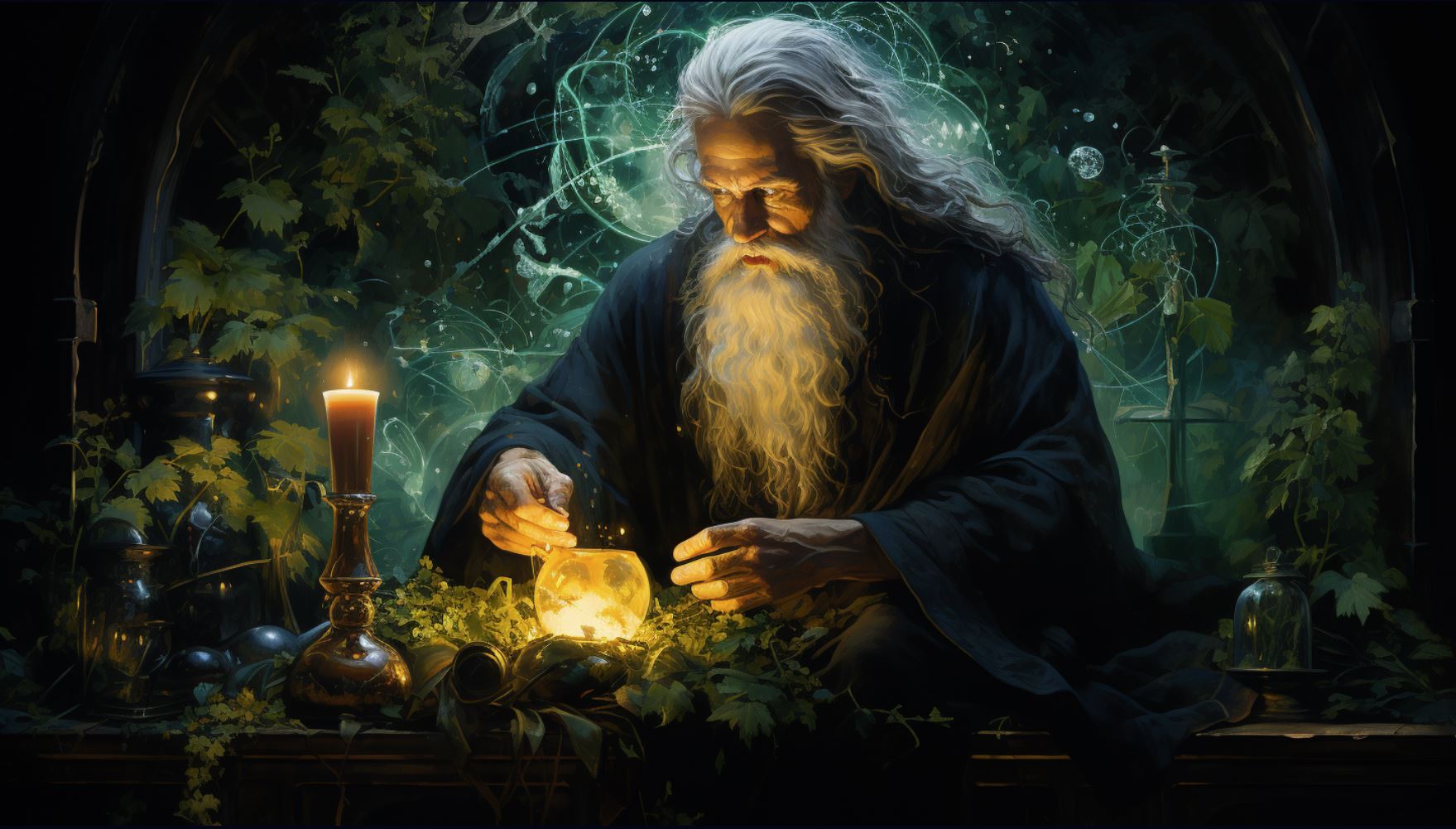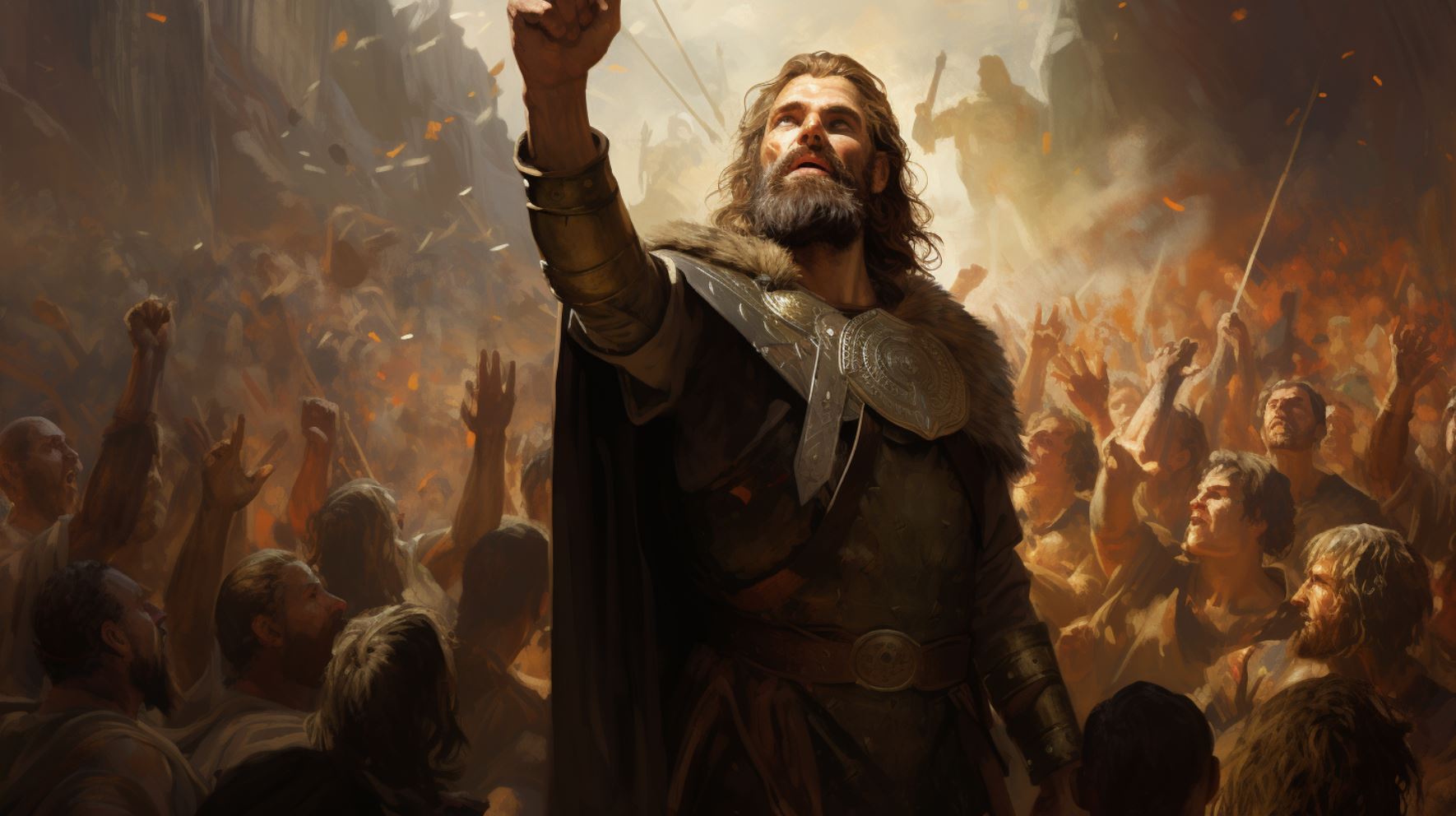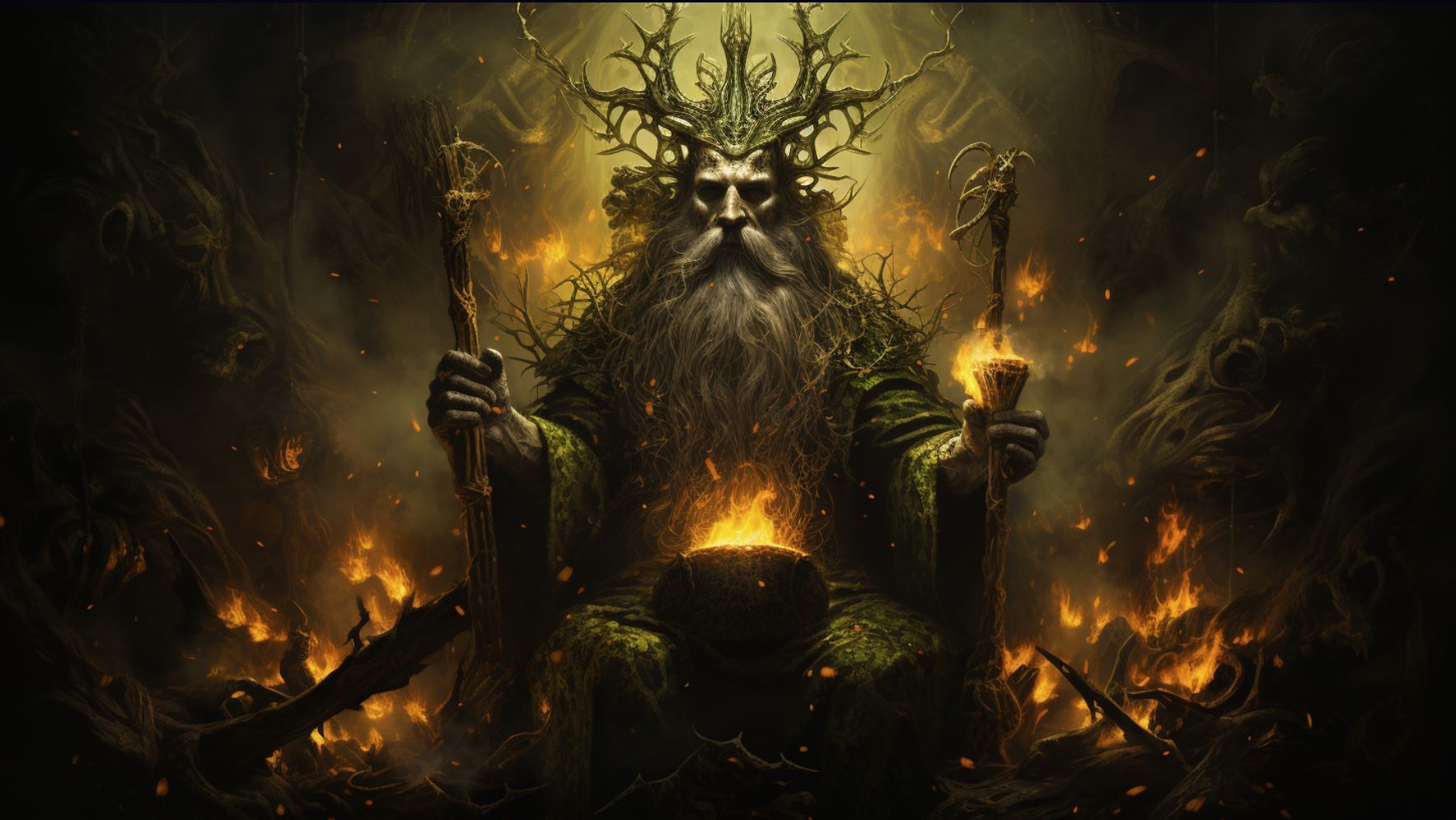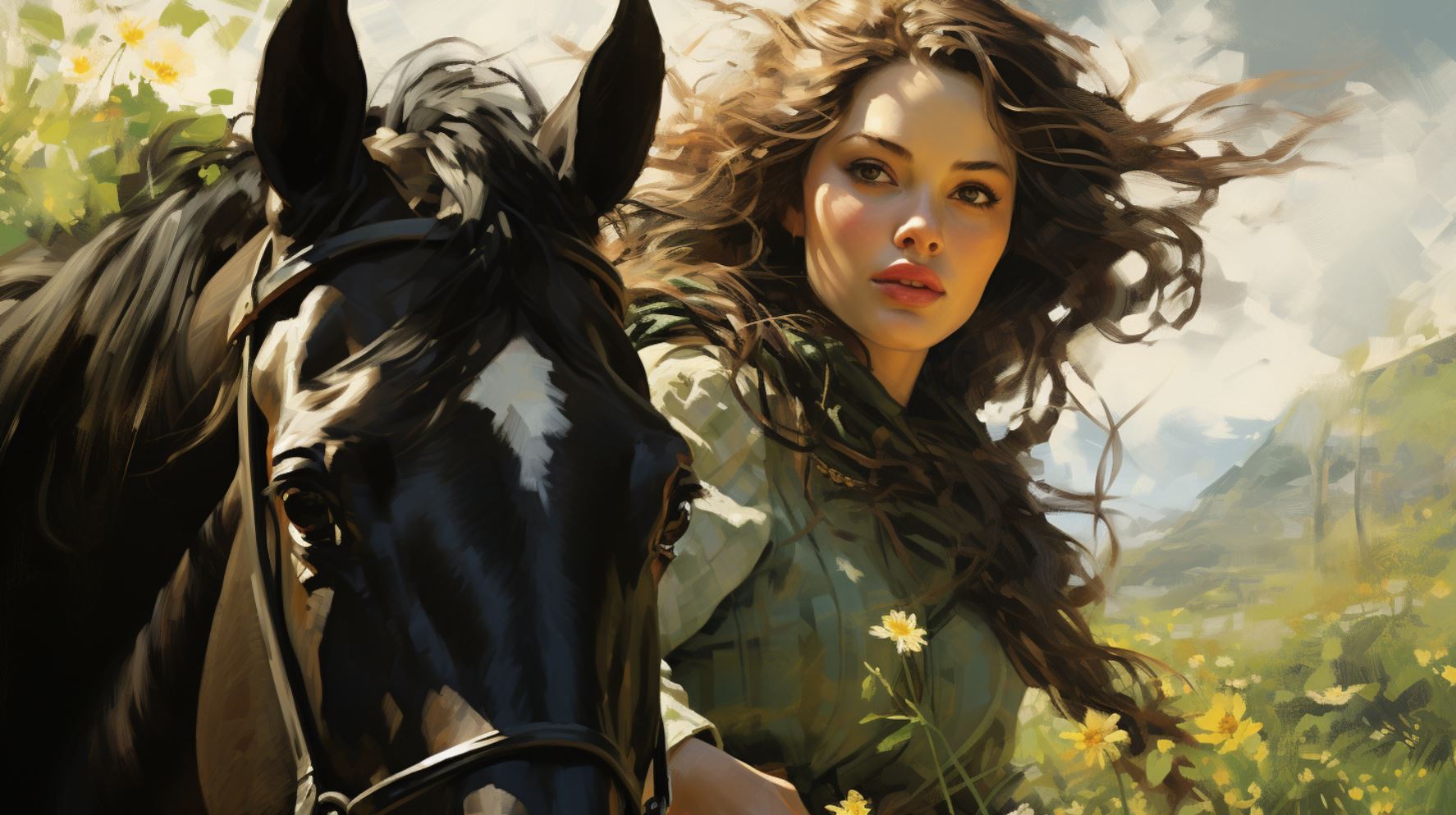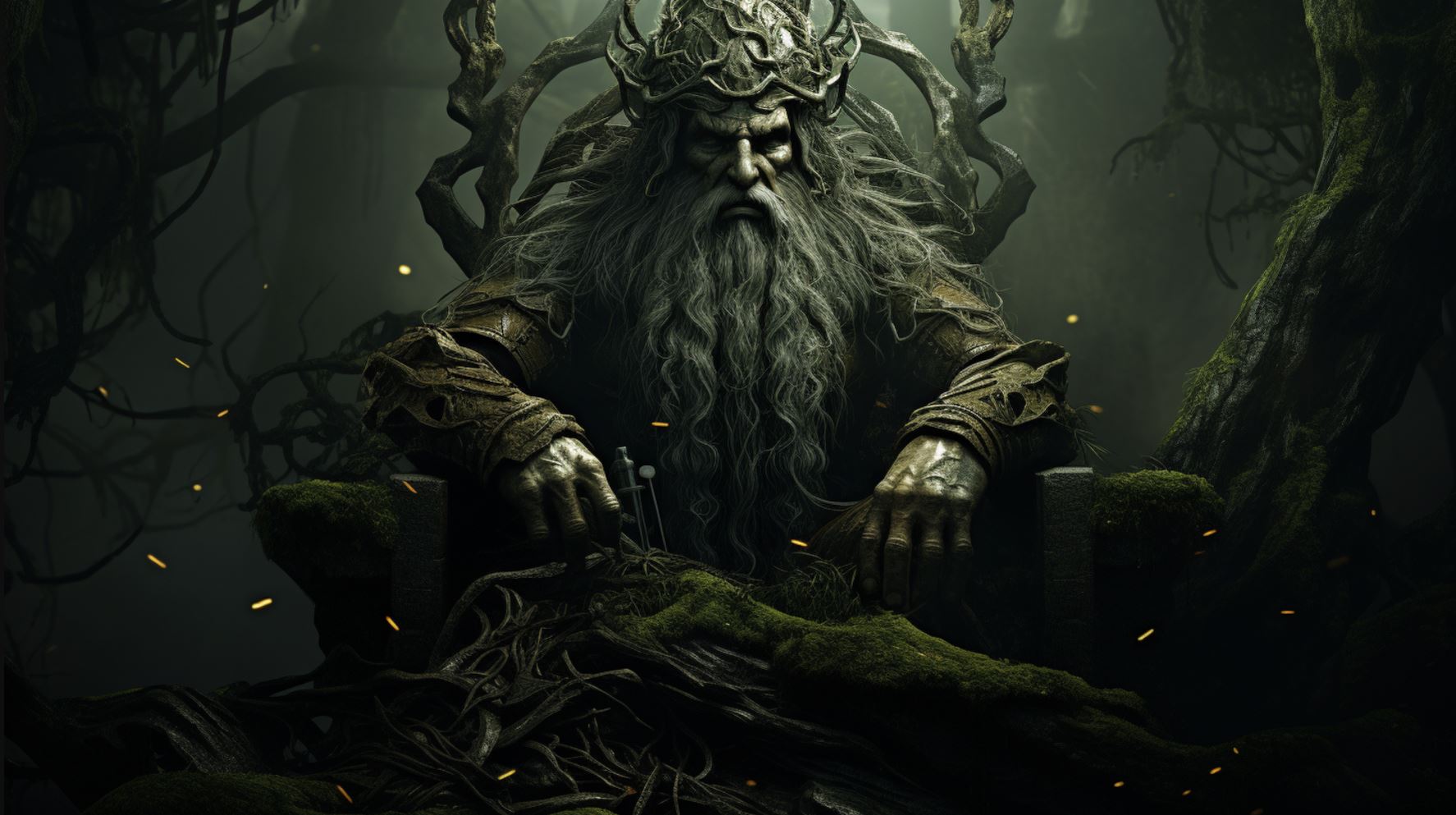Flidais Celtic Goddess: Unveiling the Mythology and Power of an Ancient Irish Deity
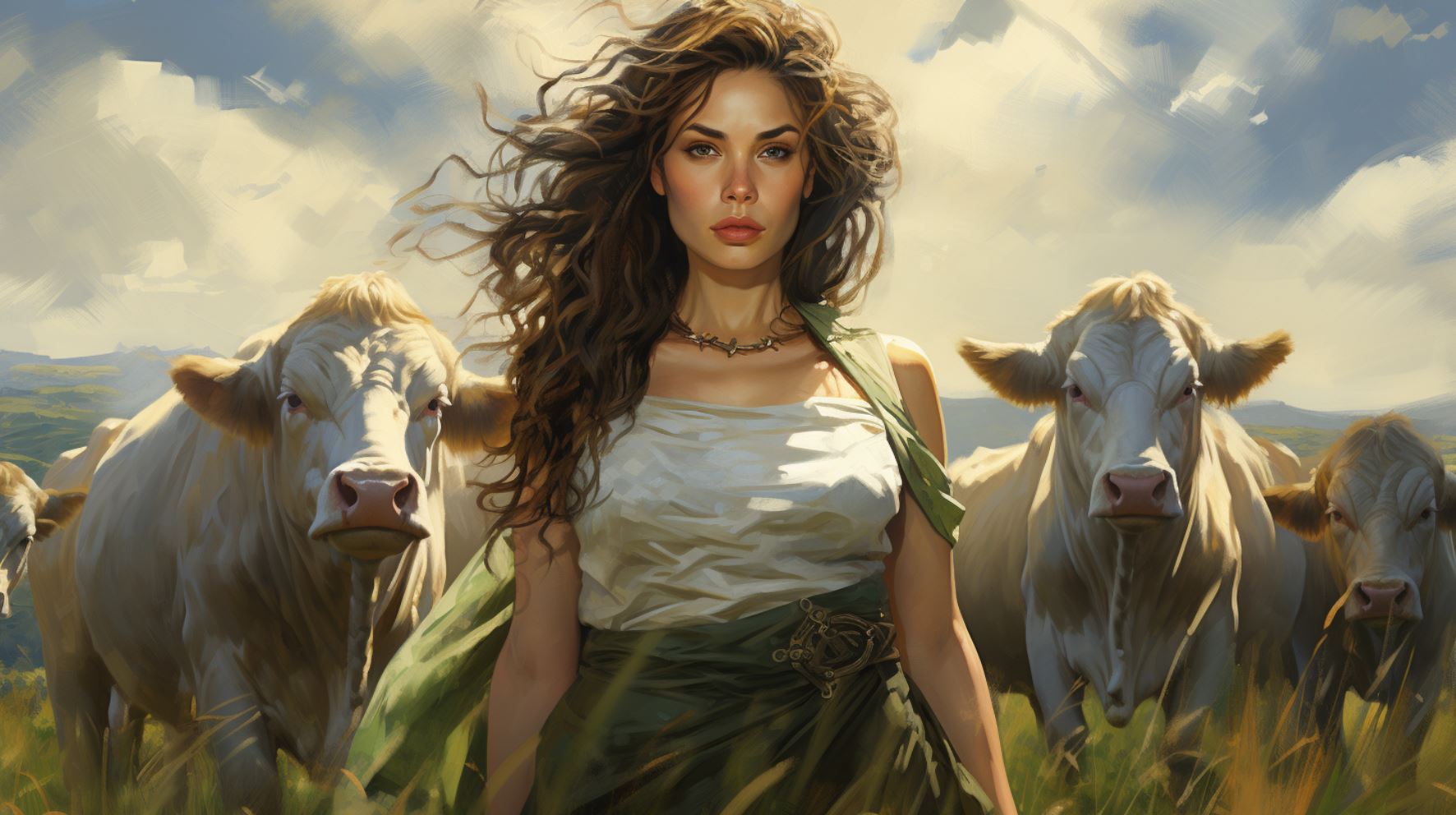
Flidais Celtic Goddess holds a significant place in Irish mythology. She represents abundance, wealth, sovereignty, magic, hunting, and sexuality. Associated with both domesticated cows and wild deer, Flidais embodies a dual nature.
Her romantic relationships, such as her notorious affair with Fergus mac Róich, and her daughters, Fand, Be Chuille, and Be Teite, add intrigue to her story. Speculations suggest Flidais may have been linked to local kings like Ádammair or Ailill Finn.
The epic ‘Táin Bó Flidais,’ often seen as a precursor to ‘Táin Bó Cuailnge,’ sheds light on her captivating mythology. Flidais encompasses a range of symbolism and interpretations, representing abundance, wealth, domesticity, and wilderness.
Flidais Celtic Goddess in Irish Mythology
Flidais Celtic Goddess holds a prominent place in Irish mythology, captivating with her multifaceted persona and associations. Let’s delve into the origins and significance of this intriguing deity, exploring her dual nature, connection to domesticated cows and wild deer, and her magical cow known as the Maol.
The Origins and Significance of Flidais
Flidais Celtic Goddess, originating from Irish mythology, is a figure of great importance and fascination. Her presence is felt in various aspects of Celtic culture, rooted in abundance, wealth, sovereignty, feasting, magic, hunting, and sexuality.
Legends and stories depict her as a beautiful-haired deity, capturing the imaginations of those who hear her name.
Flidais’ Dual Nature: Connection to Domesticated Cows and Wild Deer
A central aspect of Flidais’ mythology lies in her unique dual nature, intricately linked to both domesticated cows and wild deer. Flidais symbolizes the harmony between tamed domesticity and untamed wilderness.
This duality portrays her as a goddess with the ability to traverse realms and bridge the gap between the mundane and the extraordinary.
Flidais’ Magical Cow: The Maol
At the heart of Flidais’ mythology is her possession of a mystical cow named the Maol. This enchanted bovine obliquely represents her power over fertility and abundance. The Maol is believed to have provided sustenance and nourishment to Flidais and her people, highlighting her role as a bestower of wealth and prosperity.
The cow’s magical essence further underscores Flidais’ connection to the divine and her ability to bring forth bountiful blessings.
As we explore further into the realm of Flidais Celtic Goddess in Irish mythology, we’ll uncover her association with women in Celtic society and her enigmatic romantic relationships.
But first, let’s delve deeper into the captivating connection she shares with the women who were integral parts of the deer cult, her magical herd, and their significance.
Flidais’ Association with Women in Celtic Society
Women played a significant role in Celtic society, particularly in their association with the deer cult.
This section explores women’s involvement with Flidais and the symbolism behind it.
Women’s Role in the Deer Cult
In Celtic belief, deer held a special connection to fairies and were regarded as their cattle. Women in various districts were believed to have ownership, herding, and milking responsibilities when it came to deer.
This association between women and deer highlights their integral role in the Celtic community and their connection to spiritual beings.
Ownership, Herding, and Milking of Deer by Women
Within the deer cult, women were considered the primary caregivers. They took ownership of the deer, overseeing their herding and milking. This responsibility showcased women’s nurturing nature and their close connection to nature itself.
The role of women in the deer cult emphasized their importance in sustaining the livelihood of the community.
Flidais’ Magical Deer Herd and Their Significance
Flidais herself was believed to possess a magical herd of deer, providing a unique source of milk for her people. These mystical deer represented Flidais’ power and abundance, further solidifying her role as a goddess of wealth and prosperity.
The presence of her magical deer herd added to the mystery and enchantment surrounding Flidais, elevating her status as a revered deity.
- Women in Celtic society were closely associated with the deer cult.
- They had ownership, herding, and milking duties for the deer.
- Flidais’ magical deer herd symbolized her power and abundance.
Through their involvement with the deer cult and their connection to Flidais, women in Celtic society held a vital place within their communities.
Their nurturing nature and spiritual ties to nature were celebrated, reinforcing the importance of feminine power and influence in ancient Celtic culture.
Flidais’ Romantic Relationships and Family
Flidais, the captivating Celtic goddess, is not only known for her abundant nature and association with wealth, but also for her intriguing romantic relationships and mysterious family connections. Let’s delve into the fascinating details surrounding Flidais’ love affairs and her supposed daughters.
Flidais as Fergus mac Róich’s Notorious Lover
One of the most notorious romantic relationships attributed to Flidais is her entanglement with Fergus mac Róich, a prominent figure associated with the god of war. Legends tell us that Fergus possessed an insatiable sexual appetite, and only Flidais could satisfy his desires.
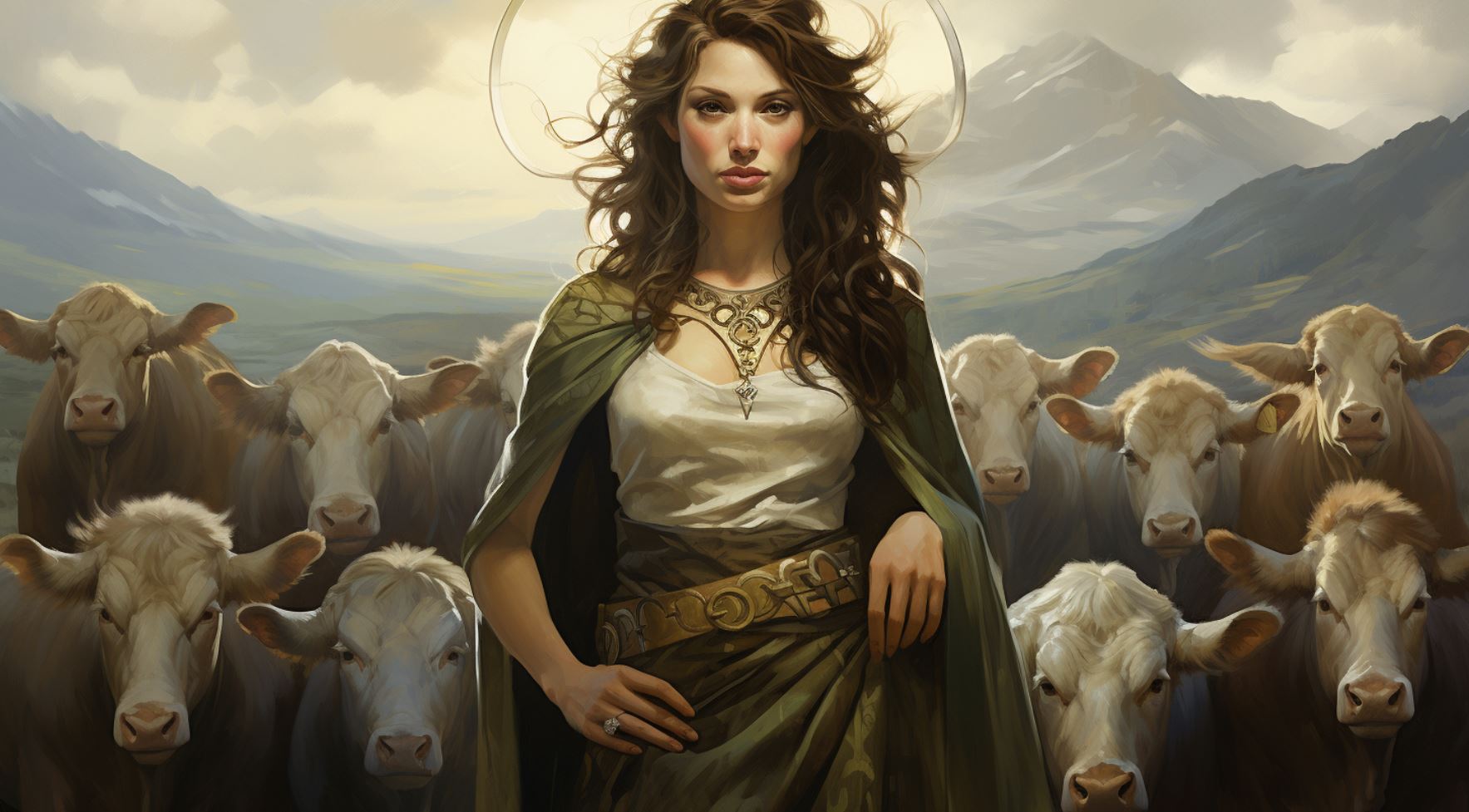
Their passionate affair is said to have been as wild and untamed as the wilderness itself. Their tempestuous relationship undoubtedly added an element of excitement and danger to Flidais’ story.
The Fairy Queens and Witches: Fand, Be Chuille, and Be Teite
Within Flidais’ mythological narrative, we encounter her supposed daughters, Fand, Be Chuille, and Be Teite.
These enchanting women are described as fairy queens and witches, bestowed with the power to enchant armies. However, some researchers propose an alternative interpretation, suggesting that they may have been part of Flidais’ coven or magical circle, mistakenly thought of as her actual offspring.
The realm of magic and the supernatural intertwines deeply with Flidais’ story, painted with shades of enchantment and mystery.
Uncertainty Surrounding Flidais’ Daughters and Relationships
Despite the presence of Fand, Be Chuille, and Be Teite in Flidais’ mythology, there remains some uncertainty about their true nature and relationship to the goddess herself. Were they indeed her daughters, or were they instead manifestations of her power and influence? This ambiguity adds layers of complexity to Flidais’ character and invites us to explore the depths of her mythological realm.
As we unravel the tales surrounding Flidais’ romantic entanglements and the enigmatic nature of her supposed daughters, we come to realize the intricate tapestry of relationships that define her existence. The allure of passion, the allure of magic, and the allure of the unknown intertwine within Flidais’ story, captivating our imaginations and inspiring us to delve deeper into the rich mythology of this Celtic goddess.
Flidais’ Possible Connections to Local Kings
Speculations on Flidais’ Husband: Ádammair or Ailill Finn
Flidais Celtic Goddess has been intriguingly linked to local kings in Irish mythology, adding a layer of mystery to her story. While her husband is not explicitly mentioned, speculations suggest potential associations with figures such as Ádammair or Ailill Finn.
These connections may offer insights into Flidais’ role and influence within the realm of Celtic royalty.
Flidais’ Prominence in County Mayo as Muinchinn
Within the tales of Flidais Celtic Goddess, her prominence and reverence are particularly notable in County Mayo, where she is known as Muinchinn. The stories originating from this region depict Flidais as a powerful and significant deity, with her imagery and legends deeply ingrained in the local folklore and cultural heritage.
Tragic Story: Fergus Drowning Flidais in Lake Carrowmore
One tragic tale surrounding Flidais involves her tumultuous relationship with Fergus mac Róich, associated with the god of war. According to legend, Fergus became consumed by his insatiable sexual appetite and was only satisfied by Flidais.
However, their connection took a tragic turn when Fergus drowned Flidais in a river flowing from Lake Carrowmore, embodying a heartbreaking betrayal and a poignant end to their tumultuous romance.
The ‘Táin Bó Flidais’ and its Connection to ‘Táin Bó Cuailnge’
Within the realm of Irish mythology, the ‘Táin Bó Flidais’ holds great significance as an epic tale that unravels the exploits surrounding Flidais Celtic Goddess.
This captivating narrative serves as a precursor to the renowned ‘Táin Bó Cuailnge,’ delving into the remarkable adventures and challenges encountered by Flidais.
Exploration of the Cattle Raid of Flidais
The ‘Táin Bó Flidais’ revolves around the captivating story of the cattle raid associated with Flidais, showcasing her immense power and influence. This epic tale focuses on her quest to protect and retain her magical cow, the Maol, which is intricately linked to her abundance and wealth.
Flidais’ determination and resourcefulness are showcased as she navigates through various trials and confrontations, all in the pursuit of preserving her valuable possession.
Comparisons and Influences between the Two Epics
While the ‘Táin Bó Flidais’ is often considered a precursor to the ‘Táin Bó Cuailnge,’ it is important to highlight the distinct themes and narratives each epic encompasses. The ‘Táin Bó Flidais’ primarily focuses on Flidais’ personal journey and her connections to abundance and sovereignty, while the ‘Táin Bó Cuailnge’ explores the heroic exploits of great warriors and kingdoms.
Despite their divergences, both epics share certain elements, such as their depiction of the profound power wielded by their protagonists and their connection to the broader realm of Irish mythology. These epic tales serve as a testament to the rich cultural heritage and the intricate web of stories that form the tapestry of Celtic folklore.
In conclusion, the ‘Táin Bó Flidais’ reveals a captivating narrative that delves into the exploits of Flidais Celtic Goddess and her connection to the remarkable cattle raid she undertakes. While distinct from the ‘Táin Bó Cuailnge,’ both epics showcase the richness and complexity of Irish mythology, immortalizing the tales of powerful deities and their extraordinary adventures.
Flidais Celtic Goddess: Symbolism and Interpretations
Flidais as a Goddess of Abundance, Wealth, and Sovereignty
Flidais Celtic Goddess embodies the powerful symbolism of abundance, wealth, and sovereignty in Celtic mythology. As a divine figure associated with these concepts, she represents the bountiful aspects of life and the blessings bestowed upon her devotees.
Flidais is revered as a bestower of prosperity and fertility, ensuring the abundance of resources, both material and spiritual, to those who worship her. Her presence is believed to bring forth prosperity, success, and riches, symbolizing the interconnectedness between the divine and the prosperity of the land.
Flidais’ Role in Domesticity and Wilderness
Within the mythology surrounding Flidais, her dual nature is further emphasized through her associations with domesticity and wilderness. As a goddess connected to both domesticated cows and wild deer, she symbolizes the delicate balance between the cultivated and untamed aspects of nature.
Flidais represents the nurturing and protective qualities embodied by the domestic sphere, while also embodying untamed wildness and unpredictability, akin to the wilderness. This duality showcases her intricate relationship with the natural world and the interconnectedness between human civilization and the wild forces of nature.
Flidais’ Associations with Magic, Feasting, and Hunting
Flidais Celtic Goddess is intimately linked to magic, feasting, and hunting, adding to her enigmatic persona. Her connection to magic represents her ability to wield supernatural powers, assisting her devotees in their quests for abundance and prosperity.
Feasting, an essential aspect of Celtic society, is aligned with the concept of abundance and celebration, often associated with Flidais’ presence and blessings. Hunting, a vital activity for sustenance, holds both practical and symbolic importance, highlighting Flidais’ role in the acquisition of resources and her connection to the wild hunt.
These associations showcase Flidais as a multifaceted deity, intertwining various aspects of human existence with the divine realm.
- Flidais’ symbolism reflects abundance, wealth, and sovereignty.
- She embodies the delicate balance between domesticity and wilderness.
- Flidais is linked to magic, feasting, and hunting.
In conclusion, Flidais Celtic Goddess epitomizes the rich symbolism and interpretations found within Celtic mythology.
Her representation as a goddess of abundance, wealth, and sovereignty, her duality between domesticity and wilderness, and her associations with magic, feasting, and hunting all contribute to her multifaceted nature and the reverence she commands within Celtic culture.
.











